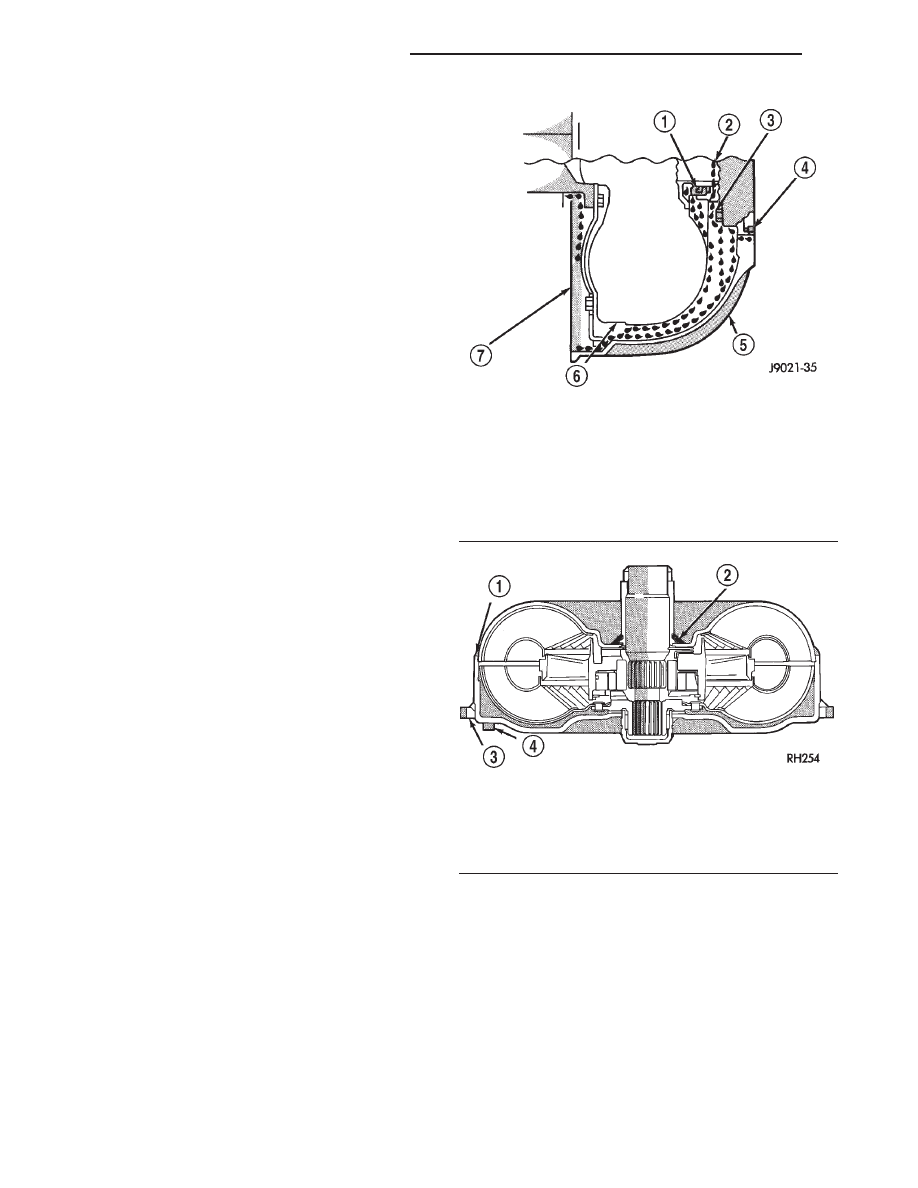Dodge Durango (DN). Manual - part 46

Front Servo Apply Air Test
Apply air pressure to the front servo apply pas-
sage. The servo rod should extend and cause the
band to tighten around the drum. Spring pressure
should release the servo when air pressure is
removed.
Rear Servo Air Test
Apply air pressure to the rear servo apply passage.
The servo rod should extend and cause the band to
tighten around the drum. Spring pressure should
release the servo when air pressure is removed.
CONVERTER HOUSING FLUID LEAK
DIAGNOSIS
When diagnosing converter housing fluid leaks,
two items must be established before repair.
(1) Verify that a leak condition actually exists.
(2) Determined the true source of the leak.
Some suspected converter housing fluid leaks may
not be leaks at all. They may only be the result of
residual fluid in the converter housing, or excess
fluid spilled during factory fill or fill after repair.
Converter
housing
leaks
have
several
potential
sources. Through careful observation, a leak source
can be identified before removing the transmission
for repair. Pump seal leaks tend to move along the
drive hub and onto the rear of the converter. Pump
O-ring or pump body leaks follow the same path as a
seal leak (Fig. 68). Pump vent or pump attaching bolt
leaks are generally deposited on the inside of the
converter housing and not on the converter itself
(Fig. 68). Pump seal or gasket leaks usually travel
down the inside of the converter housing. Front band
lever pin plug leaks are generally deposited on the
housing and not on the converter.
TORQUE CONVERTER LEAK POINTS
Possible sources of converter leaks are:
(1) Leaks at the weld joint around the outside
diameter weld (Fig. 69).
(2) Leaks at the converter hub weld (Fig. 69).
CONVERTER HOUSING AREA LEAK CORRECTION
(1) Remove converter.
(2) Tighten front band adjusting screw until band
is tight around front clutch retainer. This prevents
front/rear clutches from coming out when oil pump is
removed.
(3) Remove oil pump and remove pump seal.
Inspect pump housing drainback and vent holes for
obstructions. Clear holes with solvent and wire.
(4) Inspect pump bushing and converter hub. If
bushing is scored, replace it. If converter hub is
scored, either polish it with crocus cloth or replace
converter.
(5) Install new pump seal, O-ring, and gasket.
Replace oil pump if cracked, porous or damaged in
any way. Be sure to loosen the front band before
installing the oil pump, damage to the oil pump seal
may occur if the band is still tightened to the front
clutch retainer.
(6) Loosen kickdown lever pin access plug three
turns. Apply Loctite 592, or Permatex No. 2 to plug
threads and tighten plug to 17 N·m (150 in. lbs.)
torque.
(7) Adjust front band.
Fig. 68 Converter Housing Leak Paths
1 – PUMP SEAL
2 – PUMP VENT
3 – PUMP BOLT
4 – PUMP GASKET
5 – CONVERTER HOUSING
6 – CONVERTER
7 – REAR MAIN SEAL LEAK
Fig. 69 Converter Leak Points—Typical
1 – OUTSIDE DIAMETER WELD
2 – TORQUE CONVERTER HUB WELD
3 – STARTER RING GEAR
4 – LUG
21 - 50
42/44RE AUTOMATIC TRANSMISSION
DN
DIAGNOSIS AND TESTING (Continued)